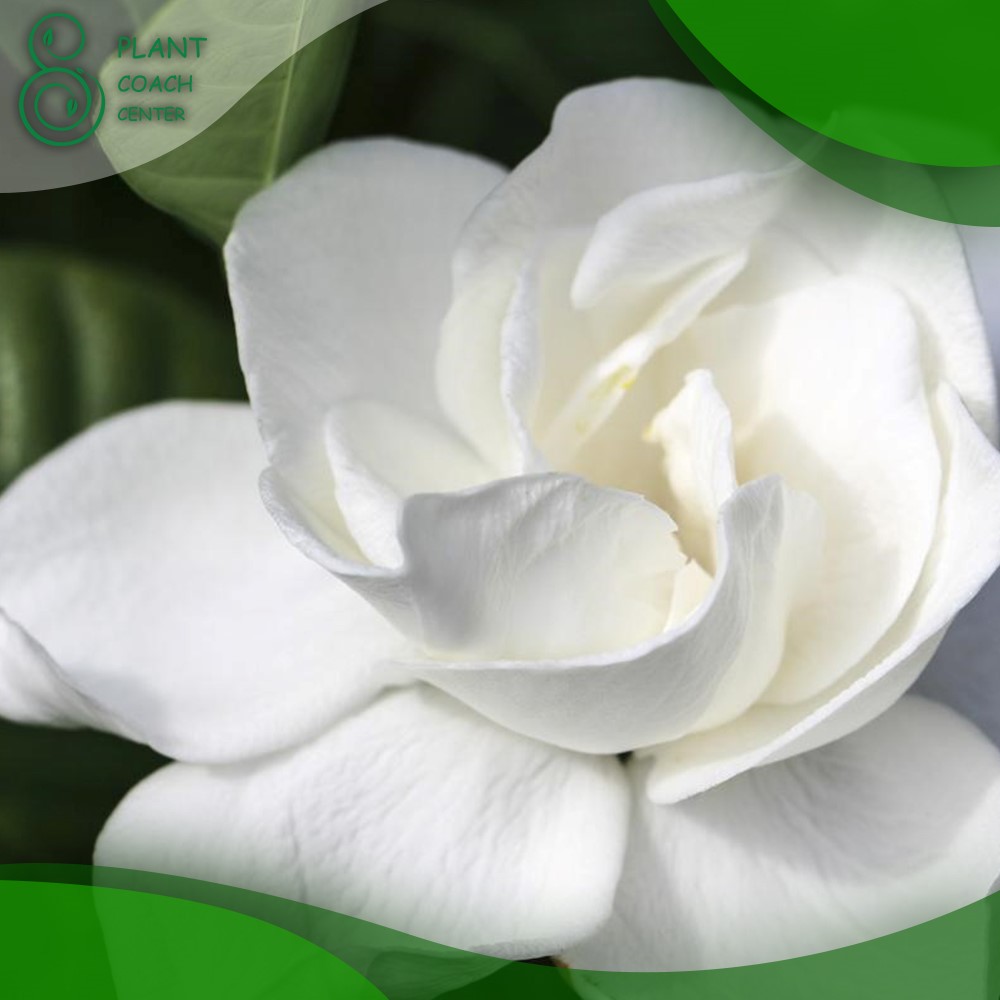Introduction to When to Prune Gardenia Bushes
Gardenia bushes, often adorning gardens with their elegant and fragrant blossoms, hold a special place among cherished ornamental plants. Beyond their aesthetic appeal, these gardenias play an intricate role in the green tapestry of our outdoor spaces. In the world of horticulture, there’s a key secret to unlocking their full potential: pruning.
Pruning isn’t just a garden chore; it’s an art form that shapes the health and beauty of gardenias. In this article of plantcoachcenter.com , we’ll dive deep into the art of gardenia pruning, but there’s a catch—it’s all about timing. The spotlight here is on the when, the precise moments when you should pick up those pruning shears to ensure your gardenias thrive, flourish, and grace your garden with their lush and fragrant blooms. So, let’s explore the rhythmic dance of nature and gardenia care, focusing on when to prune these beloved plants for optimal results.
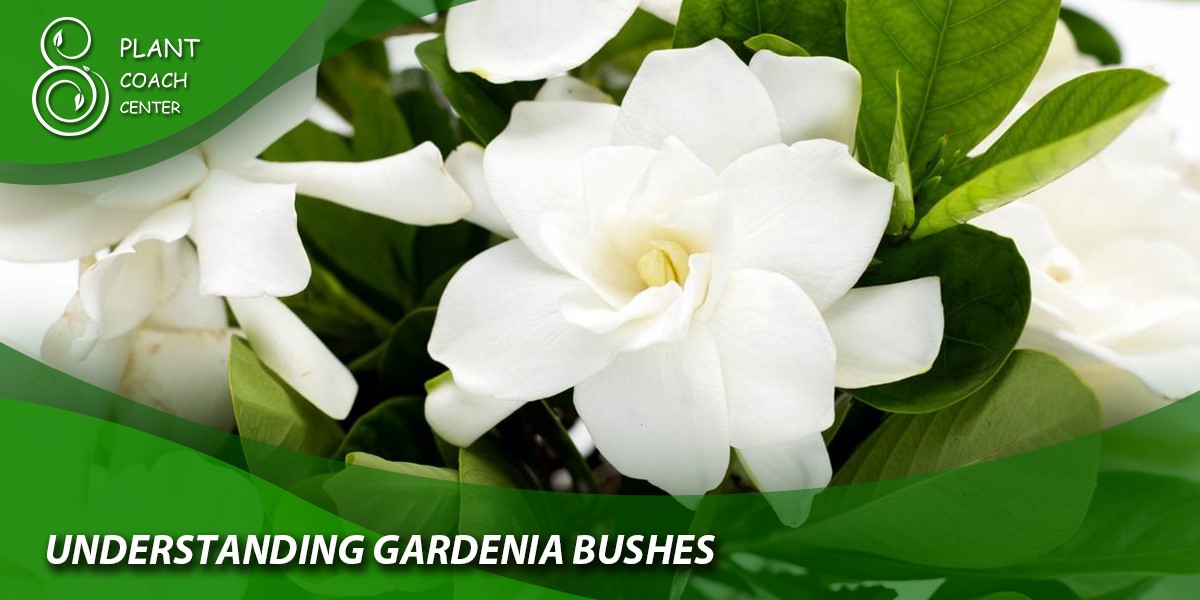
Understanding Gardenia Bushes
Gardenia plants, known for their exquisite beauty and captivating fragrance, are characterized by their glossy, deep-green leaves and stunning, waxy white or cream-colored blooms. These evergreen shrubs typically reach a height of 2 to 6 feet, with some varieties even growing taller. Their dark, lustrous foliage serves as an elegant backdrop for the intricate, star-shaped flowers, which emit a sweet and intoxicating scent.
There’s a rich tapestry of gardenia varieties, each with its distinct personality and appeal. The most common gardenia varieties include the Gardenia jasminoides, which is beloved for its classic, double-flowered blooms, and the Gardenia thunbergia, known for its unusual, elongated leaves and single white blossoms. The Gardenia radicans, on the other hand, is a low-growing, creeping variety, perfect for ground cover.
Every gardenia variety brings its own unique traits to the table. Some are hardy, able to withstand cooler temperatures and more challenging conditions, while others are more delicate, thriving in warmer and milder climates. Gardenias come in single and double-petal forms, offering options for different aesthetic preferences. Understanding these variations among gardenia bushes is crucial when determining the best timing for their pruning.
The Art of Timing
Now, let’s talk about timing—the secret ingredient to successful gardenia pruning. Timing isn’t just a matter of convenience; it’s a vital factor that can make or break the health and vitality of your gardenia bushes. So, why does timing matter so much?
Timing matters because it aligns with the natural rhythms of gardenia growth and dormancy. Gardenias, like many plants, have specific growth and rest periods. Pruning at the right time syncs up with these phases, ensuring that you don’t disrupt their delicate balance.
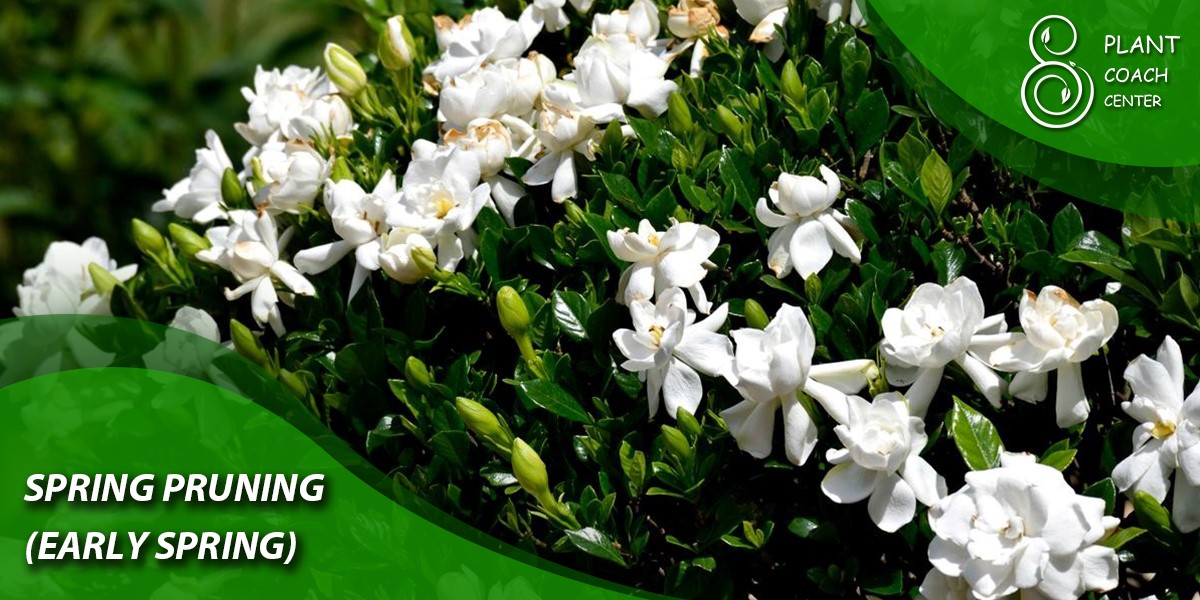
Pruning at the optimal moment sets the stage for luxuriant growth and an abundance of fragrant blooms. It allows gardenia bushes to channel their energy and resources into producing new shoots and flowers. It’s like giving them a green light to flourish.
Think of it this way: if you prune too early, you risk cutting off potential buds and blossoms, stunting the growth of your gardenias. On the flip side, if you prune too late, you might interfere with the next growth cycle, potentially compromising the quantity and quality of the blooms.
In essence, mastering the art of timing in gardenia pruning is about harnessing the full potential of these captivating plants, allowing them to flourish in all their glory. So, let’s delve deeper into the intricacies of when to prune gardenia bushes to unlock their true splendor.
Spring Pruning (Early Spring)
As the first rays of sunlight warm the earth, signaling the end of winter’s grasp, gardenia enthusiasts eagerly await the prime time for spring pruning. Early spring is the moment when your gardenia bushes are waking from their winter slumber but haven’t fully embarked on their growth spurt. This delicate balance is precisely what makes early spring the sweet spot for pruning these fragrant beauties.
The Benefits of Early Spring Pruning
Early spring pruning sets the stage for a season of abundant and fragrant gardenia blooms. Here’s why it’s so beneficial:
Stimulates New Growth: By pruning in early spring, you encourage the development of fresh shoots and branches. These new growths will be the source of your gardenia’s lush foliage and fragrant blossoms.
Optimal Healing Time: The wounds from pruning have ample time to heal before the active growing season begins. This reduces the risk of infection and disease, ensuring the long-term health of your gardenia.
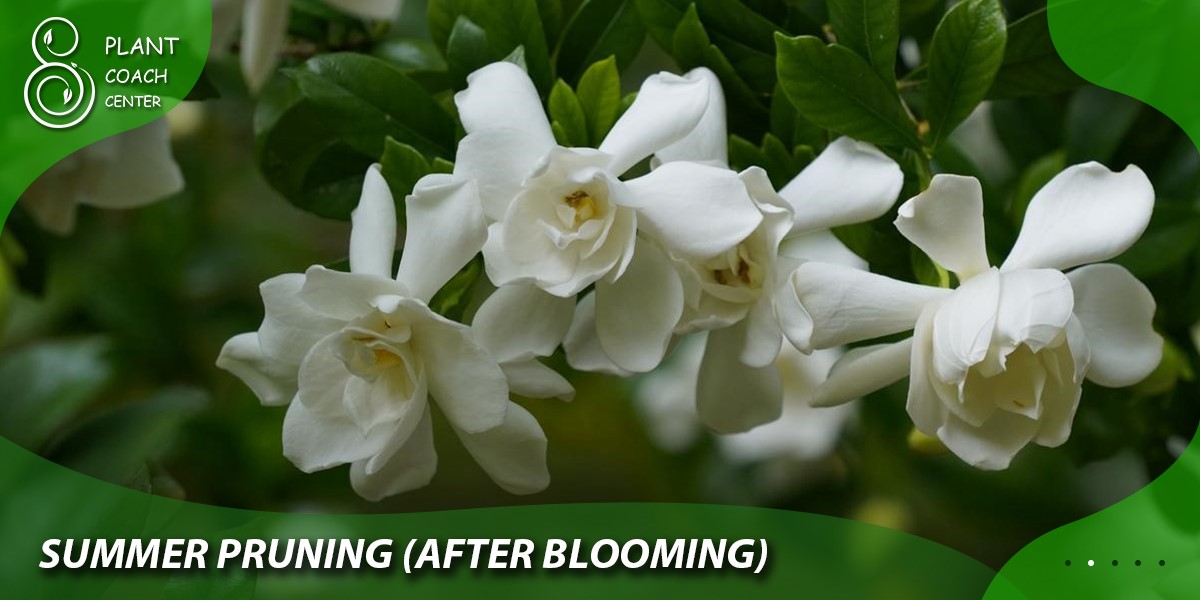
Enhances Air Circulation: Removing dead or crowded branches during early spring pruning improves air circulation around your gardenia bushes. This prevents fungal diseases and promotes overall plant vigor.
Controls Size and Shape: Early spring pruning allows you to shape your gardenias to your desired form. It’s the ideal time to trim for size control, ensuring your bushes fit harmoniously in your garden.
Summer Pruning (After Blooming)
During the warm embrace of summer, your gardenia bushes may require a touch of attention. While spring pruning sets the stage, summer pruning ensures that your gardenias maintain their shape and vitality throughout the growing season. Let’s delve into the details of why, when, and how to perform summer pruning for your gardenia bushes.
When is Summer Pruning Necessary for Gardenias?
Summer pruning is typically conducted after the initial bloom of your gardenia bushes has faded, usually in late spring to early summer. This timing aligns with the natural growth cycle of these plants. As your gardenias put on their first spectacular show of blooms, they then shift their energy toward producing new growth.
The Importance of Post-Blooming Summer Pruning
Summer pruning is instrumental for maintaining the health and aesthetics of your gardenia bushes:
Shape Control: By trimming your gardenias after the initial bloom, you can refine their shape and prevent them from becoming too leggy or unruly. This promotes a more compact and aesthetically pleasing appearance.
Size Management: Summer pruning helps control the size of your gardenias, ensuring they don’t outgrow their designated space in your garden.
Stimulate New Growth: Removing spent blossoms and trimming back leggy growth encourages your gardenias to produce fresh shoots and buds, setting the stage for a potential second bloom later in the season.
Improved Airflow: Pruning out crowded or crossing branches enhances airflow within the plant, reducing the risk of fungal diseases and promoting overall plant vigor.
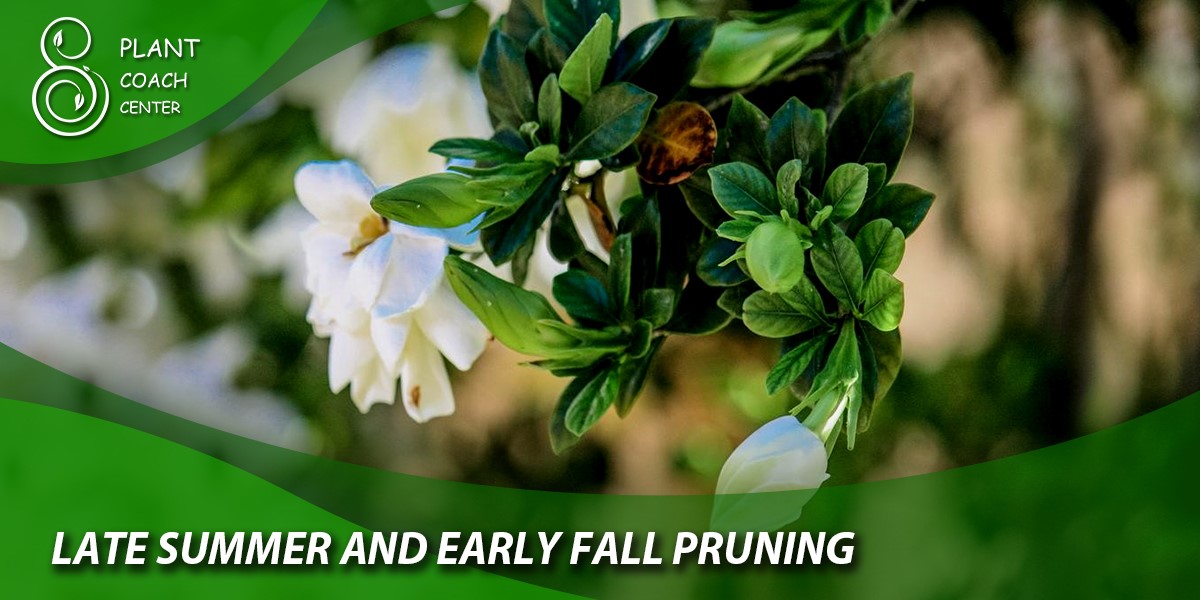
Late Summer and Early Fall Pruning
Under What Circumstances Late Summer and Early Fall Pruning Is Advantageous
Late summer and early fall can be opportune moments to revisit your gardenia bushes with your pruning shears. But why prune during this time? Late summer and early fall pruning serve several key purposes:
Control Size Before Winter: If your gardenias have experienced vigorous growth during the spring and summer, they might have become a bit unruly. Pruning at this juncture helps manage their size before they enter the dormant winter phase.
Shape Refinement: This period allows you to fine-tune the shape of your gardenias. Trim back any overextended branches or branches that spoil the overall form to maintain a pleasing aesthetic.
Prevent Overcrowding: Address any crowded growth that has occurred during the growing season. Pruning out branches that rub against each other can help prevent disease and encourage healthier growth.
Specific Advantages of Late Summer and Early Fall Pruning
Pruning during late summer and early fall offers a range of specific benefits for the overall health of your gardenia bushes:
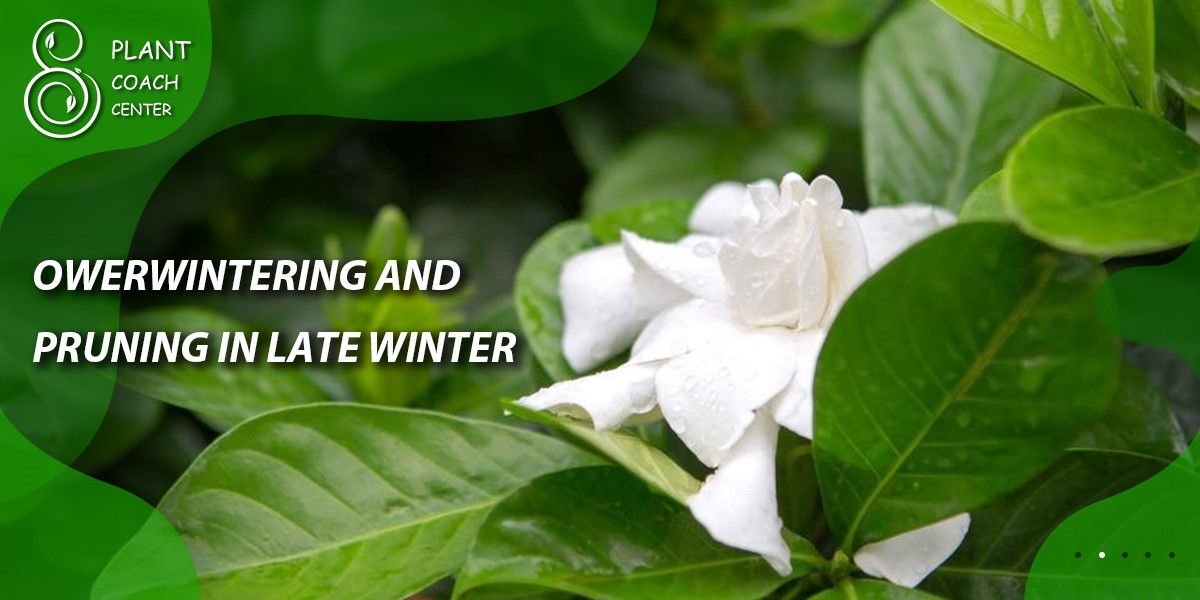
Minimized Stress: Late summer and early fall pruning are less stressful for gardenias compared to pruning during the active growing season. It allows them to focus on preparing for the upcoming winter rather than diverting energy to new growth.
Disease Prevention: Trimming away any dead or diseased branches before winter sets in reduces the risk of fungal infections and rot during the colder months.
Improved Air Circulation: By thinning out dense growth, you enhance air circulation within the plant, which is essential for preventing moisture-related diseases like powdery mildew.
Enhanced Winter Survival: Late summer and early fall pruning create a more compact and tidy gardenia bush. This can help it withstand harsh winter conditions more effectively.
Overwintering and Pruning in Late Winter
The Significance of Overwintering and Late Winter Pruning
Overwintering and late winter pruning are critical for ensuring the survival and vitality of your gardenia bushes. Here’s why:
Protection from Frost: Late winter pruning helps remove any dead or damaged branches that may be vulnerable to frost damage. It also allows you to trim back growth that might have been affected by winter’s chill.
Promotes Spring Growth: Pruning during late winter or early spring initiates the awakening process for your gardenias. By trimming away dead wood and shaping the plant, you encourage robust growth as the weather warms.
Disease Management: Eliminating dead or diseased branches during late winter pruning reduces the risk of diseases spreading as the gardenia springs back to life.
Insights on Late Winter or Early Spring Pruning
Late winter or early spring pruning is a meticulous process:
Select a Mild Day: Choose a mild, dry day when the gardenia is not frozen or covered in frost. Pruning when the plant is frozen can cause more harm than good.
Inspect Thoroughly: Examine your gardenia closely for dead or damaged branches. Cut them back to just above a healthy bud or leaf node.
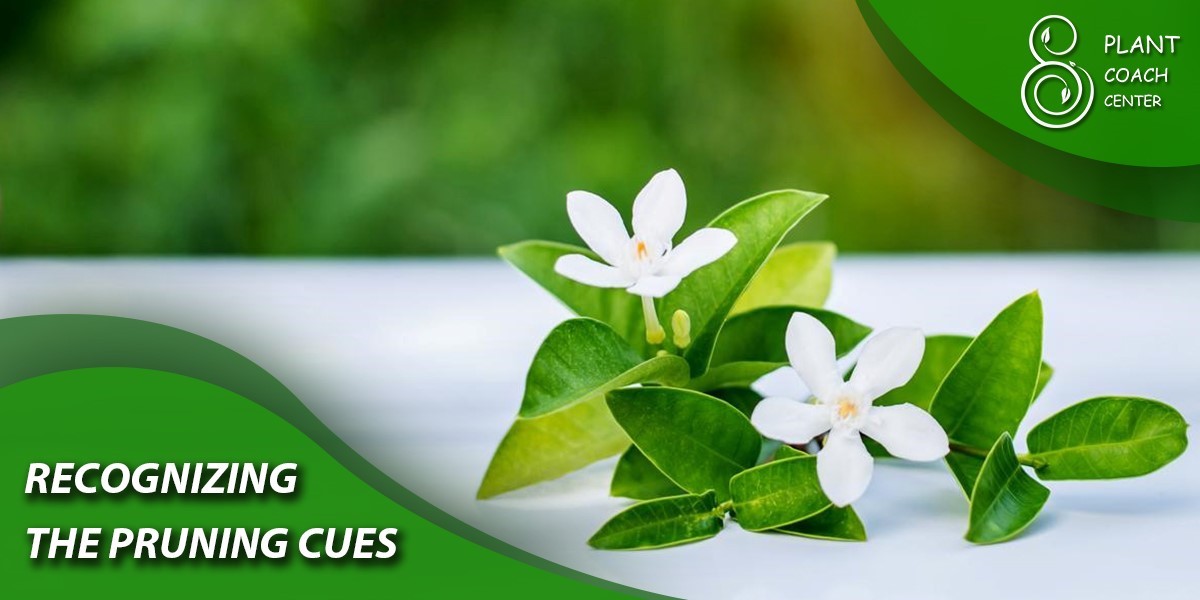
Shaping the Future: If you want to shape your gardenia for the coming growing season, this is the time to do it. Trim selectively to maintain the desired form.
Dispose of Debris: As always, collect and dispose of pruned material away from your garden to prevent disease spread.
By carefully tending to your gardenia bushes during late summer, early fall, and late winter, you ensure their health, beauty, and resilience, no matter the season. It’s the art of gardening that keeps your gardenias thriving year after year.
Recognizing the Pruning Cues
Signs That Gardenia Bushes Give When It’s Time for a Trim
Gardenia bushes are remarkably communicative when it comes to signaling their need for a trim. Here’s a list of telltale signs to watch out for:
Overgrown Appearance: When your gardenia starts looking unruly, with branches extending beyond its desired shape, it’s a clear indication that a trim is in order.
Sparse Blooms: If your once-bountiful gardenia starts producing fewer blossoms or has smaller blooms, it might be telling you it needs some pruning attention.
Yellowing Leaves: Yellowing or discolored leaves can signify that certain branches are not receiving adequate sunlight or airflow, indicating the need for pruning.
Dead or Dying Branches: Gardenias can have occasional dead or dying branches. If you spot these, it’s essential to remove them promptly to maintain plant health.
Branches Crossing or Rubbing: Overlapping branches can create friction and lead to damage or disease. Pruning away crossing or rubbing branches prevents these issues.
Sparse Foliage at the Base: If the lower part of your gardenia is becoming increasingly bare, it may benefit from a light trim to encourage bushier growth.
Excessive Suckering: Gardenias can produce suckers or shoots from the base or rootstock. If these start proliferating excessively, it’s a cue to prune them back.
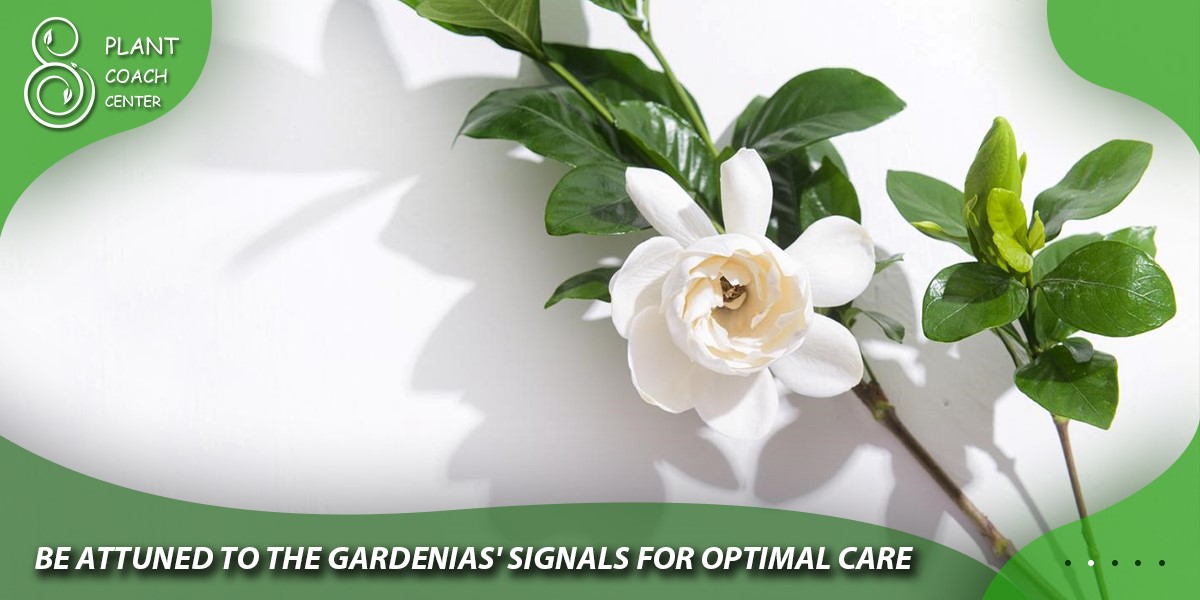
Be Attuned to the Gardenias’ Signals for Optimal Care
While this list of cues is valuable, the most crucial aspect of gardenia care is being attentive to your specific plant’s needs. Gardenias are individuals, and their growth patterns can vary. Here’s how you can stay in tune with your gardenias for optimal care:
Regular Inspection: Take time to inspect your gardenias regularly. Walk around them and closely examine their branches, leaves, and overall appearance.
Watch for Changes: Note any changes in your gardenias’ growth patterns, including sudden overgrowth, fading blooms, or the emergence of dead or diseased branches.
Touch and Smell: Feel the leaves for moisture and health, and take in their fragrance. Healthy leaves should be lush and glossy, and the plant should have that signature gardenia scent.
Consider the Season: Recognize that gardenia pruning cues can vary with the seasons. Spring and summer cues may differ from those in late summer and fall.
Document Your Observations: Keeping a gardening journal can help you track your gardenias’ behavior over time. Note when you last pruned and what changes you observed.
Ask for Advice: Don’t hesitate to seek advice from experienced gardeners or local horticultural experts if you’re unsure about the cues you’re observing.
Remember that your gardenia bushes are your gardening partners, and their cues are their way of communicating their needs. By being attentive and responsive, you’ll ensure they receive the care they deserve, resulting in healthier, more vibrant gardenias in your garden.
A branch of white gardenia flower
Conclusion
In the delicate dance of gardenia care, timing proves to be the virtuoso conductor, orchestrating the symphony of lush and fragrant blooms. As we wrap up our journey through the seasons of gardenia pruning, let’s distill the essence of our discoveries. Timing matters—whether in the crisp embrace of early spring, the warmth of summer, or the contemplative moments of late winter, it’s the precise moment you choose to prune that breathes life into your gardenias.
The benefits of this precision are manifold: from stimulating vigorous growth and bountiful blooms to preventing disease and maintaining impeccable shape, well-timed pruning is the key. So, dear readers, embrace this knowledge and wield your pruning shears with confidence. Let your gardenia bushes flourish under your care, filling your garden with not just beauty, but also the sweet fragrance of success. With each well-timed snip, you create a fragrant masterpiece. Happy pruning!
FAQs
When is the best time to prune gardenia bushes?
Prune in early spring, late summer, or late winter for optimal results.
Can I prune my gardenias in the middle of summer?
It's best to avoid heavy pruning during the active summer growing season.
How much should I prune my gardenias at once?
Avoid removing more than one-third of the plant in a single pruning session.
Should I deadhead my gardenias after they bloom?
Yes, deadheading spent blossoms encourages new growth and blooms.
Is late winter pruning suitable for all regions?
Late winter pruning is ideal for regions with milder winters.
What tools do I need for gardenia pruning?
Sharp pruning shears or loppers and rubbing alcohol for tool sanitation.


